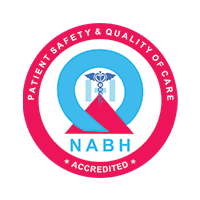Your Life After a Joint Replacement Surgery

Experiencing joint replacement surgery marks a significant turning point in one's life. Whether it’s a knee, hip, or any other joint, the journey toward recovery and adaptation involves understanding and patience.
In this blog, we’ll discuss everything you need to know about recovering from joint replacement surgery and how to manage life post-surgery. We will also highlight a notable joint replacement hospital in Pune that offers exceptional care and support.
What to Expect After Joint Replacement Surgery
Immediate Post-Surgery Phase
The first few days after your surgery are critical. During this time, you'll be under close supervision by healthcare professionals who will help manage your pain and monitor your recovery. The primary goal during this phase is to ensure your comfort and prevent any complications, such as infections or blood clots.
Pain management is a critical component of your immediate recovery. You'll likely receive pain relief medications and may be encouraged to move and walk with assistance as soon as possible. This early movement is crucial to your recovery as it promotes blood circulation and helps prevent stiffness in your new joint.
The Rehabilitation Process
Rehabilitation begins almost immediately following your surgery. A physical therapist will guide you through exercises tailored to strengthen your muscles and improve your joint's range of motion. Consistency in your rehabilitation exercises is vital for successful recovery.
The duration of rehabilitation can vary depending on individual circumstances, but generally, it extends over several weeks to months. During this period, you'll learn how to safely perform everyday activities, such as walking, climbing stairs, and other movements that involve your new joint.
Long-term Recovery and Adjustments
As weeks turn into months, you'll notice significant improvements. However, complete recovery can take up to a year or longer, depending on factors like age, overall health, and how actively you participate in rehabilitation.
Maintaining regular follow-up visits with your surgeon and physical therapist is essential. These professionals will monitor your progress and make any necessary adjustments to your recovery plan. This ongoing care is vital to ensure you're on the right track and address any concerns.
Managing Life After Joint Replacement
Setting Realistic Expectations
Setting realistic expectations is one of the most critical aspects of managing life after joint replacement surgery. It's natural to expect immediate relief from joint pain and discomfort; however, it's essential to understand that full recovery takes time. Patience is key.
Adapting Your Lifestyle
Adapting your lifestyle post-surgery involves adjusting to protect your new joint and promote its longevity. These might include:
- Maintaining a healthy weight: Extra weight can put additional stress on your new joint, so keeping your weight in check is crucial.
- Staying active: Engage in low-impact exercises such as walking, swimming, or cycling, which can help maintain joint function and overall health without overstressing your new joint.
- Ergonomic adjustments at home: Modify your living space to reduce the risk of falls and make daily activities easier. This might involve installing grab bars in the bathroom, using a raised toilet seat, or ensuring your home is free of tripping hazards.
Emotional and Mental Health
Joint Replacement Surgery Recovery isn't only about physical recovery; it’s also about taking care of your emotional and mental well-being. It’s common to experience frustration or sadness if recovery is slower than expected. Support from family, friends, and support groups can be incredibly beneficial during this time. Additionally, maintaining an open line of communication with your healthcare provider can help address any psychological challenges effectively.
Navigating Daily Activities Post-Surgery
Home Adaptations
After joint replacement surgery, adapting your home environment to your new mobility needs can significantly improve your recovery and independence. Consider implementing the following changes:
- Bedroom adjustments: Ensure your bed is easy to get in and out of. You might need a bed rail or a bed that adjusts in height.
- Bathroom safety: Non-slip mats, a shower chair, and handheld shower heads can help prevent falls in the bathroom, which are common post-surgery risks.
- Kitchen modifications: Organize your kitchen so that frequently used items are within easy reach, avoiding the need to bend down or stretch up.
Mobility Aids
Initially, mobility aids such as walkers, canes, or crutches will be vital in helping you move around safely. Use these tools as instructed by your physical therapist to ensure proper support and balance as your new joint heals and strengthens.
Transportation
Driving is usually only recommended once your doctor gives you the go-ahead, which can be several weeks after surgery. Arrange for help with transportation to follow-up appointments and other outings. When you start driving again, ensure your vehicle is comfortable and supportive, with ample room to get in and out quickly.
Long-term Health Management
Regular Exercise
Maintaining an active lifestyle is crucial for the longevity of your joint replacement. Regular exercise helps keep your muscles strong and your joints flexible. Focus on low-impact activities you enjoy, such as walking, cycling, or swimming. Avoid high-impact sports that involve running, jumping, or sudden changes in direction, as these can put undue stress on your new joint.
Healthy Eating
A balanced diet supports overall health and aids in recovery. Foods rich in calcium and vitamin D are essential for bone health, while foods high in antioxidants and omega-3 fatty acids can help reduce inflammation. Staying hydrated is also crucial for maintaining joint health and overall well-being.
Monitoring for Complications
Stay vigilant for signs of complications, such as excessive pain, swelling, redness, or infection around the incision site. Additionally, be aware of symptoms that could indicate a blood clot, such as increased swelling in one leg, severe pain in your calf, or shortness of breath. Contact your healthcare provider immediately if you experience any of these symptoms.
Emotional and Social Well-being
Building a Support Network
Recovery can be challenging, not just physically but also emotionally. Maintaining communication with friends and family who can offer support is essential. Joining a support group for individuals who have undergone joint replacement surgeries can also be beneficial. Sharing experiences and tips with others facing similar challenges can provide comfort and practical advice.
Psychological Resilience
Maintaining a positive outlook is essential during the recovery process. Set small, achievable goals for your daily activities and celebrate these milestones. If you find yourself struggling with anxiety or depression, consider speaking to a professional counselor or therapist who can provide strategies to help you cope.
Conclusion
Life after joint replacement surgery offers a new lease on life, relieving pain and improving mobility. While the journey requires patience and effort, the outcome can be profoundly rewarding. Understanding the process, managing expectations, and engaging actively in your recovery is critical to ensuring a successful outcome. At DPU Super Speciality Hospital, Pimpri, Pune, we provide comprehensive education and resources to help you confidently navigate each step of your recovery.
With the proper care, support, and attitude, you can embrace this new chapter in your life with optimism. Our multidisciplinary team is dedicated to your well-being, offering personalized treatment plans and rehabilitation programs to help you achieve the best possible results. Trust in DPU Super Specialty Hospital to support you every step on your path to improved mobility and pain-free life.








